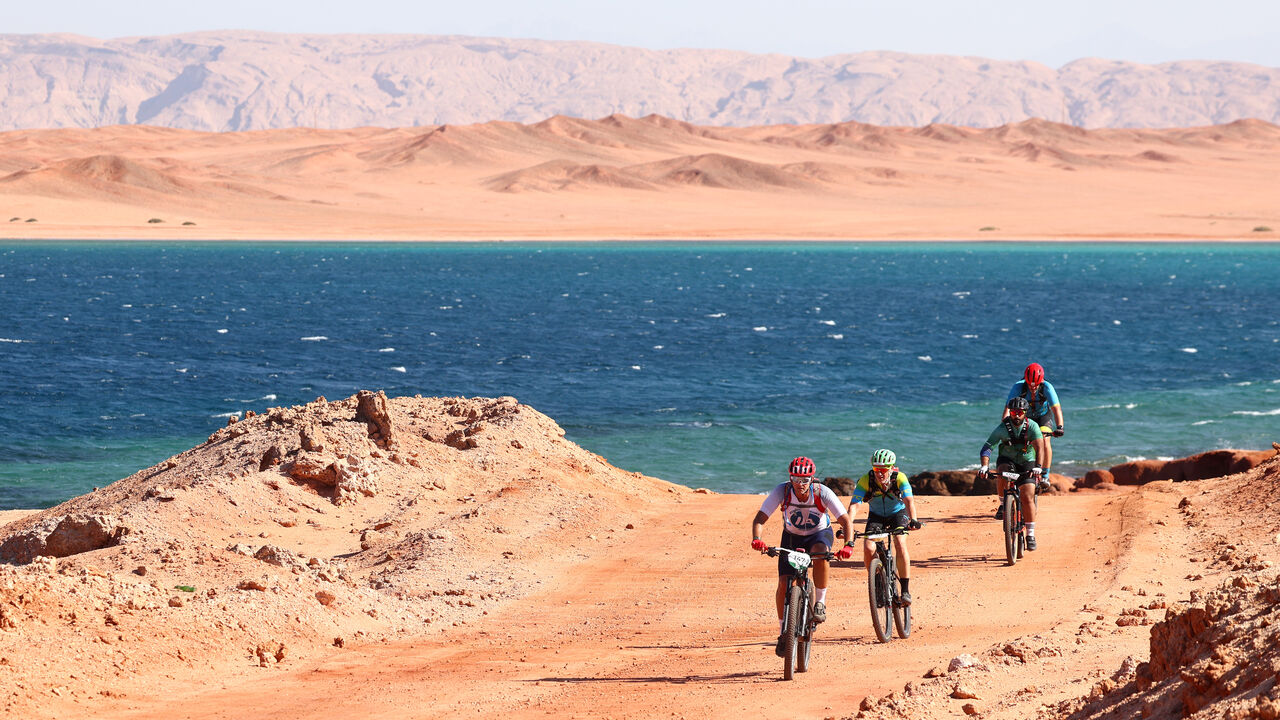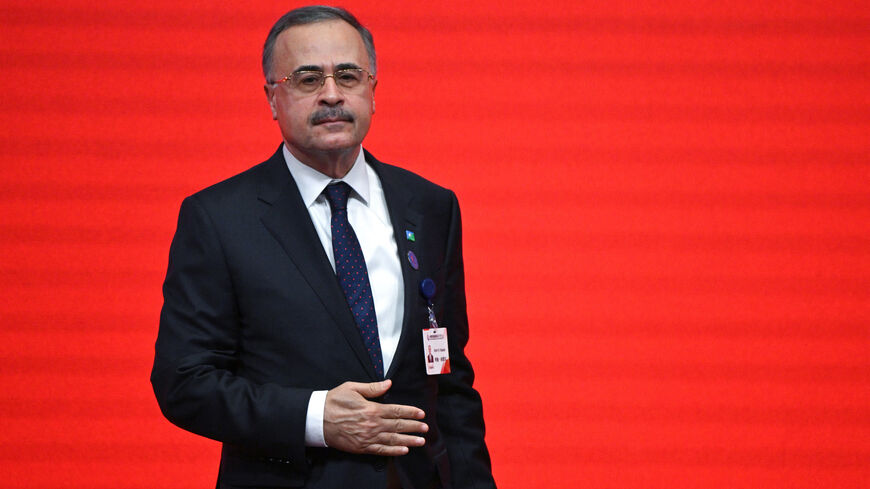Why is Saudi Arabia cutting funding, reducing costs on ambitious projects?
Saudi Arabia is reevaluating its financial priorities under Crown Prince Mohammed bin Salman’s ambitious Vision 2030 plan to diversify the nation away from a reliance on oil.

Over the last few months, employees working for state-backed Saudi companies have been startled by unforeseen cost cuts. It started during the first quarter of 2024 and affected those working in diverse sectors across the kingdom, from the media to the country's ambitious giga projects. Department spendings were significantly reduced, employees were made redundant and managements did everything big and small to save money, causing an atmosphere of tension and uncertainty.
The feelings of ease that accompanied what appeared to be unlimited resources in previous years, with lavish spending on grand events and launches, were replaced with fear over what might happen in the future.
Those concerns were heightened when news of reduced spending on giga projects was released.
In April it was announced that Neom’s mirror-clad desert city called The Line had been scaled back. It was meant to extend for 170 kilometers (105 miles) and be the eventual home of 1.5 million residents, but project officials told Bloomberg in April that it would prioritize the “first module” and build just 2.4 kilometers (1.9 miles) and house 300,000 residents by 2030.
“Government spending cuts are best understood as expenditure rationalization, improved decision-making and cost-benefit analysis of projects, including mega projects, in the light of achievements since the launch of Vision 2030,” Nasser Saidi, former Lebanese economy and trade minister and founder of economic and business advisory consultancy Nasser Saidi & Associates, told Al-Monitor. “The Saudi economy remains in a transformation phase with increased policy emphasis on growing the non-oil sector for economic diversification and greater private sector participation.”
Saudi analysts agree.
“The strategy of the Saudi economy is based on the portfolio approach: The Saudis will be reviewing projects on a continuous basis, and projects that have shown more promise will get more money,” Ali Shihabi, a Saudi analyst and commentator, told Al-Monitor.
Saudi Minister of Finance Mohammed bin Abdullah Al-Jadaan addressed sudden changes in spending during a meeting at the World Economic Forum in Riyadh in April 2024, stating, “There are challenges … we don’t have ego. … We’ll change course, we’ll adjust, we’ll extend some of the projects, we’ll downscale some projects, we’ll accelerate some projects.”
As Shihabi puts it, “Ultimately, the commitments made under Vision 2030 are more than the resources available. It was a very ambitious plan put together, and the government never expected more than 40-50% of it to be achieved.”
A hunt for foreign money
Saudi Arabia is now increasingly on the hunt for foreign cash to help achieve MBS’s grand Vision 2030 goals: boost economic growth, reduce the budget deficit, diversify the economy and ultimately end its reliance on oil.
Foreign direct investment (FDI) in the kingdom is still below expectations and has for years fallen behind projections set forth by the Saudi National Investment Strategy.
According to GaStat, FDI inflows clocked in at $19 billion in 2023, lower than the $22 billion annual FDI target set out in the National Investment Strategy for 2023. Inflows for 2023 were also lower than in 2021, which saw $27 billion, and 2022, which brought in $33 billion.
Global interest rates remain high, averaging around 4% over the next two years, nearly twice the average recorded during the two decades before the pandemic, according to a recent World Bank report, meaning that investors will be cautious.
Last week, after it began preparing more that one year ago to sell shares of state oil giant Aramco, targeting FDI, Saudi Arabia is set to raise $11.2 billion from its secondary public share offering. The stock was priced lower than its expected range, and over half were sold to foreign investors, according to Reuters.
Other future financial commitments for Saudi Arabia include major events. These include the Asian Winter Games in 2029 to be held in Trojena, a Saudi mountain resort; the Asia Cup 2027; Expo 2030 in Riyadh; and the FIFA World Cup 2034.
Events such as these don’t necessarily see returns but do increase the global recognition of the Saudi brand, just as the 22nd FIFA World Cup in Doha and Expo 2020 Dubai did.
Diversification paying off
While abrupt cost cutting in Saudi sectors is largely reflective of a “reconsidering of priorities,” as Saudis have called it under Crown Prince Mohammed bin Salman’s multitrillion-dollar Vision 2030 plan, the kingdom’s diversification efforts are paying off.
“Significant diversification efforts have been underway, with Saudi diversifying in three dimensions: more diversified economic activity, more diversified trade and greater diversification of government revenues,” said Saidi. “New sectors have been unlocked— not just overdependence on real estate and construction, including mining, tourism, entertainment and renewable energy.”
Additionally, he underlined, “Saudi Arabia is fully engaged in the energy transition as witnessed through its great investments in clean and renewable energy and electric mobility and its undertaking of a de-risking of fossil fuel assets as witnessed by Aramco share sale.”
The composition of Saudi Arabia’s GDP is now more diversified. According to a report by Tim Callen for AGISW, the share of private non-oil sector in total nominal GDP increased to 44.6% in 2023, up from 39.6% in 2022 and 42.8% in 2018.
Proof of Saudi Arabia’s progress in diversification is also reflected in its improved score in the Economic Diversification Index (EDI), an annual report issued by the Mohammed bin Rashid School of Government in Dubai. Saudi Arabia was ranked 91st in 2022, climbing up over 10 spots since it was ranked 105th in 2000, among the bottom 10 nations. In 2019, pre-Covid, it was ranked 78th globally.
While diversification is progressing, the kingdom, as Al-Jaadan stated during the Qatar Economic Forum, remains dependent on one commodity: oil.
According to the latest data from the country's ministry of finance, overall revenues grew by 4% year-on-year to SAR 193.4 billion in Q1 2024 thanks to a 2% year-on-year increase in oil revenues, while non-oil revenues grew at raster rate of 9%. Most non-oil revenues are derived from taxes on goods and services, up 11% year-on-year to SAR 69.9 billion until the end of March. Taxes from income, profit and capital gains, on the other hand, fell by 9% year-on-year to SAR 6.6 billion.
Overall deficit stood at SAR 12.49 billion ($3.3 billion) in Q1 2024, marking the sixth consecutive quarter of deficits.
In May, Al-Jaadan, when announcing the quarterly budget performance report in Riyadh, stated how the country was “intentionally running a sustainable deficit for economic development.”
The deficit is not a just a consequence but a means to achieve development goals, he underlined. A budget deficit of SAR 79 billion has been forecast for this year.
At present everyone is waiting for the government to release the new budget, which, a Saudi source told Al-Monitor, is expected this month.
As an employee in a Saudi media company said on condition of anonymity, “Nobody knows what the new budget will be for state-backed Saudi companies, but the cost-cutting may have something to do with anticipated budget cuts.”




.jpg?h=502e75fa&itok=bfs8C-67)



